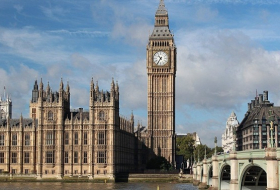The first known Covid-19 case was a market vendor in the Chinese city of Wuhan, not an accountant who appeared to have no link to the market but whose case contributed to speculation the virus could have leaked from a lab, according to a US study, AzVision.az reports citing the Guardian.
The origin of the virus that causes Covid-19 remains a mystery and a major source of tension between China and the United States.
A joint study by China and the World Health Organization this year all but ruled out the theory that Covid-19 originated in a laboratory, saying that the most likely hypothesis was that it infected humans naturally, probably via the wildlife trade.
A WHO-led team of experts spent four weeks in and around the central city of Wuhan with Chinese scientists and said in a joint report in March that the Sars-CoV-2 virus had probably been transmitted from bats to humans through another animal but that further research was needed.
The accountant, who was widely thought to be the first person with Covid-19, reported that his first symptoms appeared on 16 December, several days later than initially known, Michael Worobey, head of ecology and evolutionary biology at the University of Arizona, said in the study published in the journal Science on Thursday.
The confusion was caused by a dental problem man had on 8 December, the study said.
“His symptom onset came after multiple cases in workers at Huanan Market, making a female seafood vendor there the earliest known case, with illness onset 11 December,” the study said.
It said most early symptomatic cases were linked to the market, specifically to the western section where raccoon dogs were caged, and it provided strong evidence of a live-animal market origin of the pandemic.
Prof Worobey was one of the 15 or so experts who in mid-May published a column in Science demanding serious consideration of the thesis that the virus had leaked from a laboratory in Wuhan.
In this latest article, he argued that his research into the origin of the outbreak “provides strong evidence of a live-animal market origin of the pandemic”.
One earlier criticism of the market theory was that because health authorities raised the alert about cases of a suspicious disease linked to the market as early as 30 December 2019, that would have introduced a bias that led to the identification of more cases there than elsewhere, since attention had already been drawn to it.
To counter that argument, Prof Worobey analyzed cases reported by two hospitals before the alert was raised. Those cases were also largely linked to the market, and those which were not were nevertheless geographically concentrated around it.
“In this city of 11 million people, half of the early cases are linked to a place that’s the size of a soccer field,” Worobey told the New York Times.
“It becomes very difficult to explain that pattern if the outbreak didn’t start at the market.”
Peter Daszak, a disease expert who was on the WHO investigation team, said he was convinced by Prof Worobey’s analysis. “That 8 December date was a mistake,” he told the Times.
The WHO proposed last month a new expert panel to investigate the source of the coronavirus.
















































